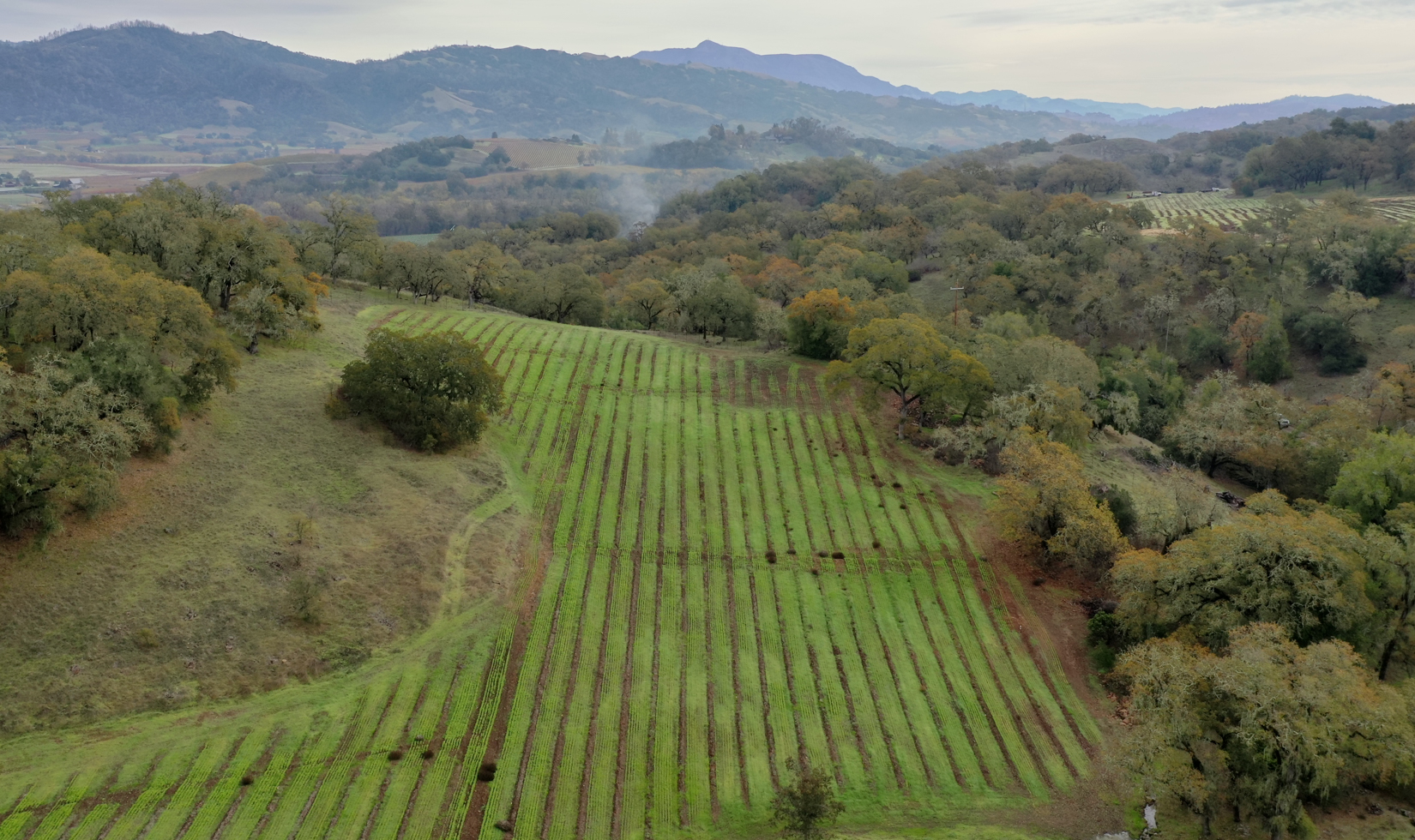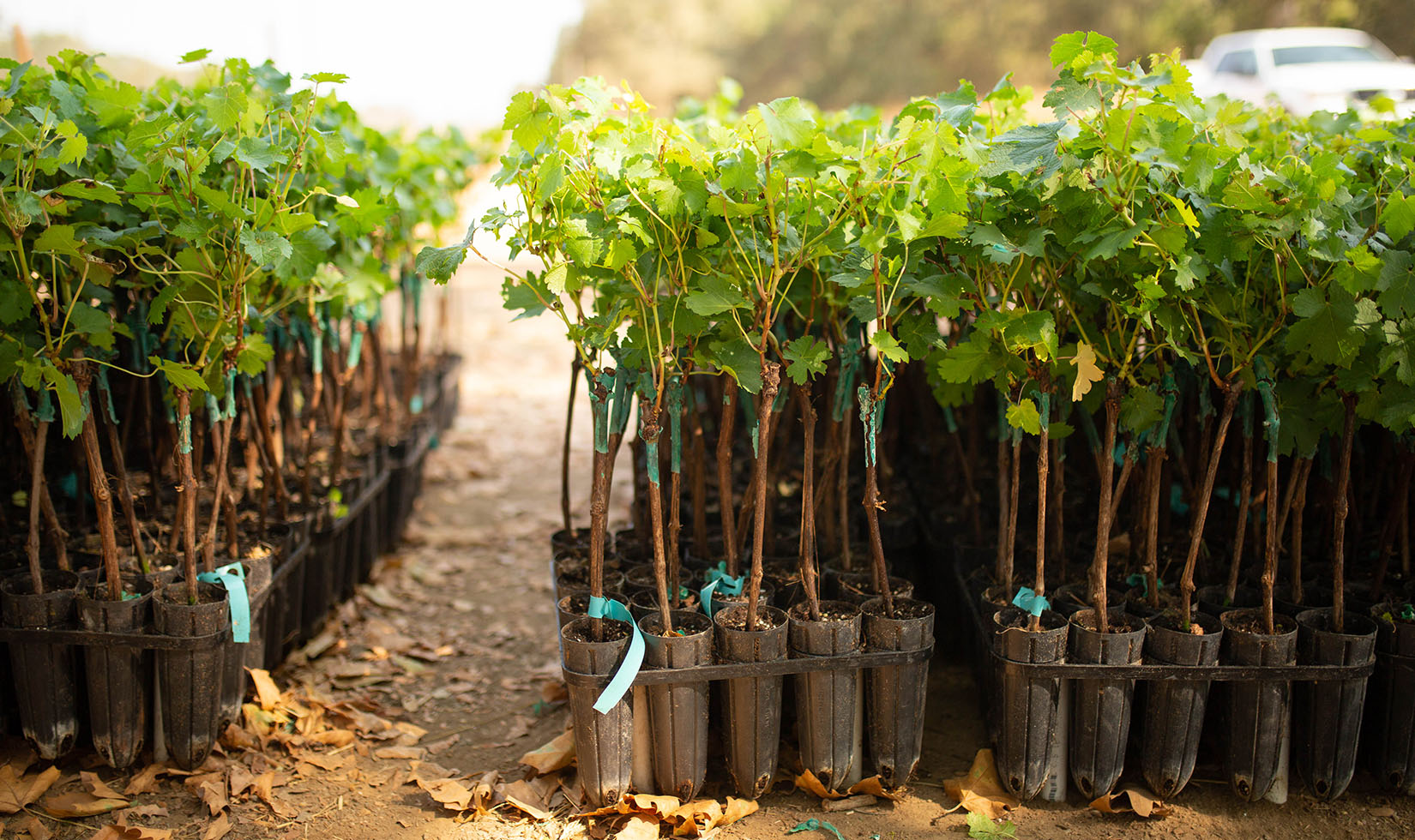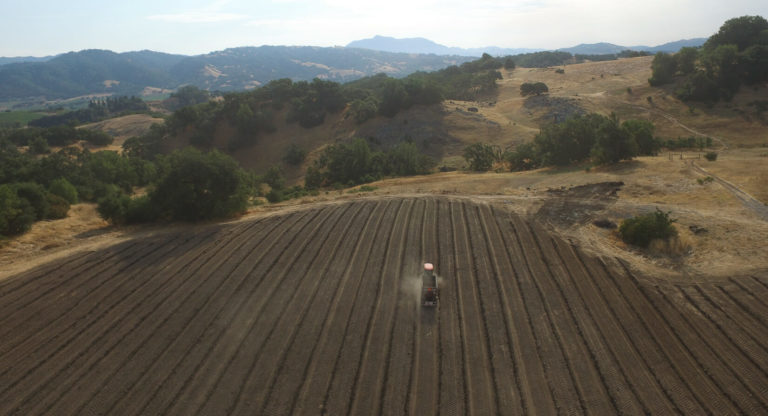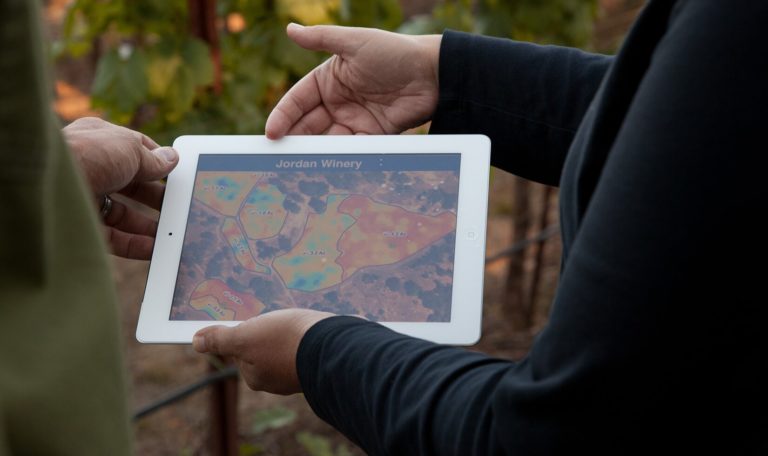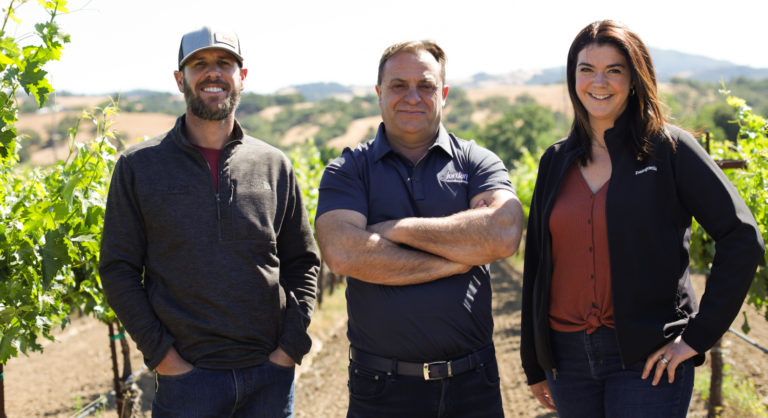The life of a winemaker revolves around cycles. From bud break to flowering to harvest to barreling, each vintage is shaped by a series of perpetual new beginnings in the vineyard and the cellar. The optimistic feeling of a fresh start is always one season away.
New beginnings for the grape grower aren’t as frequent. Yes, just like a winemaker, the grower’s job revolves around the annual lifecycle of the grapevine. But when the plants have reached the end of their lives, they must be replanted. The grower gets one shot, maybe two, in his or her career at replanting an aging vineyard. The amount of effort and money it takes to plant even an acre of vineyard is enormous, so we have to get it right. The stakes are very high.
This was the exact challenge I was faced with about 10 years ago at Jordan. The 2011 vintage was quite challenging, and the Jordan Estate vineyards—all 34 blocks—were struggling. The grapevines weren’t fully ripening their fruit, so the sugar levels and tannins were not in balance. Very little estate grapes, about three percent, were ranked high enough to make their way into the Jordan Cabernet Sauvignon master blend in those days.
The situation was perplexing. Vitis vinifera’s noble grape varieties, such as chardonnay, cabernet sauvignon and merlot, should live a productive life for about 25-30 years. The Jordan Estate hillside vineyards had been planted for the first time from 1996 to 1999. They weren’t even 20 years old. Much research was needed to better understand why our estate grapevines were not reaching their full potential. In the meantime, Rob Davis and the winemaking team started sourcing more grapes from growers in the Geyserville area of Alexander Valley to continue Jordan’s pursuit of quality.
The First Bug Strikes
Before digging into why the plants were failing us, it’s important to understand the historic events around their first planting. The first major mass replant of vineyards in Wine Country occurred between the 1980s to late 1990s, when a pesky insect called phylloxera spread rapidly through Napa and Sonoma vineyards, fatally infecting them. Jordan’s original estate vineyard, located in the Alexander Valley about 1.5 miles from the winery, was a victim of phylloxera—which led to the pivotal decision to plant vineyards on the hillsides of Jordan Estate, the roughly 1,200-acre ranch surrounding our winery, for the first time.
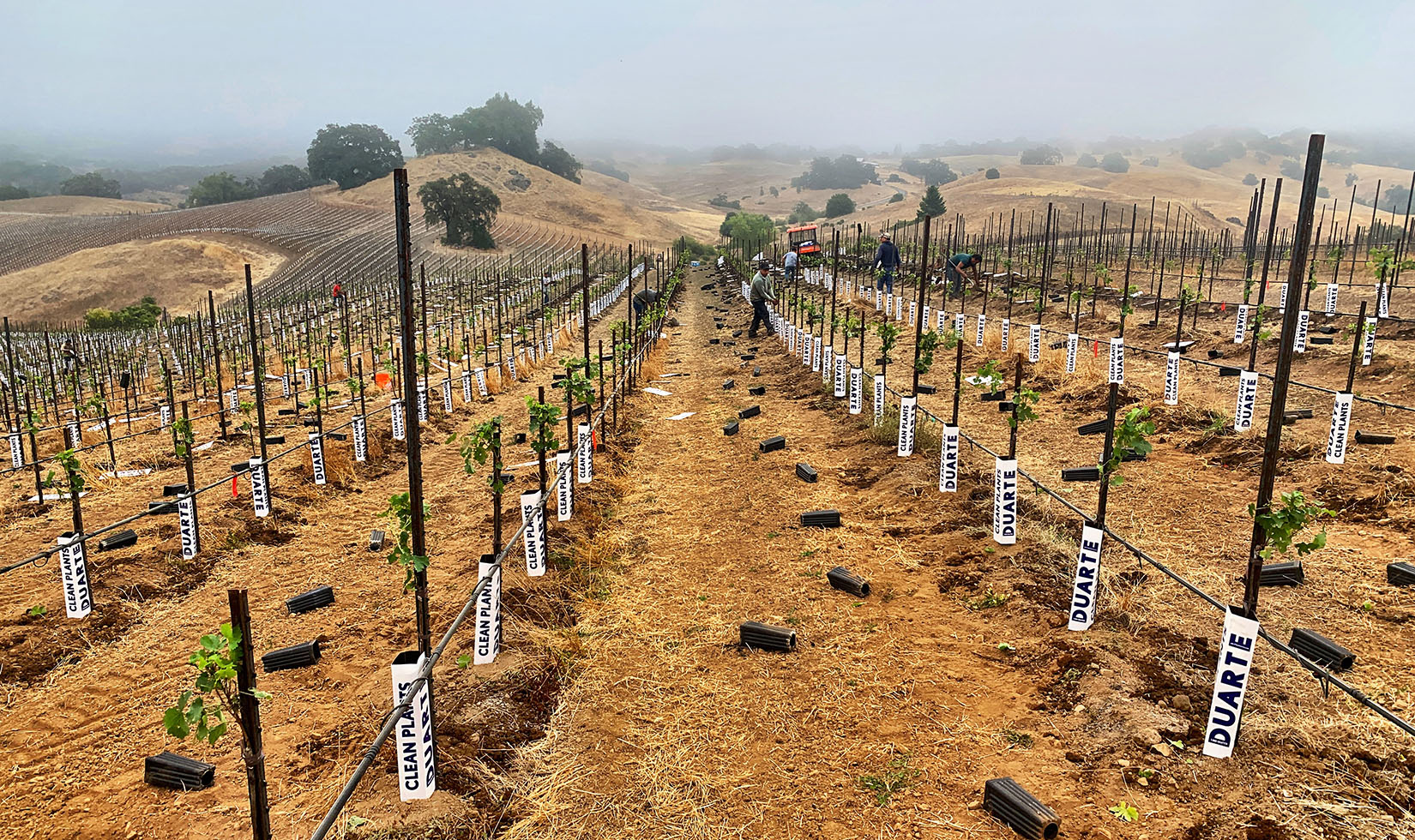
A Rush to Plant
The urgency to plant new vineyards—either on existing sites or new plots of ground—was intense. Only one block planted to St. George rootstock in 1974 remained while the rest of the blocks were replanted. Phylloxera-resistant rootstocks, new clones of traditional grapes and the latest fads in vineyard planting were being pushed. Due to plant nurseries’ supply chain woes, vineyard managers took risks with the materials that were in stock and ready to ship.
Both the replant of the Jordan original valley floor vineyard and the first planting of the Jordan Estate hillsides occurred using industry standards of 1996. Vines were planted at wide spacings, and spur pruned bilateral training and tight vertical shoot positioning were among some of the popular practices. The vineyard manager at the time also decided to experiment with plant bags that seemed like a wonderful solution for keeping the fragile young plants safe when planting—the baby grapevines’ root balls were covered in a protective wrapper that reportedly would naturally decompose into the soil over time. The grapevines seemed happy for the first few years, and when I was hired to be the viticulturist at Jordan in 2008, our former winemaker Rob Davis challenged me with trying to elevate the taste of the estate grapes to the levels he loved from our nearby growers. He’d become gradually disappointed with the estate grapes as the vines began to mature past the four-to-six-year mark. I had no idea what was happening below the surface, so we spent several years adopting new technologies available to better understand the soil’s mineral composition, parent material, water-holding capacity and beyond. Several of our experiments to adapt the farming to the different soil types and water-holding capacities occurred, including grafting some grapevines to other varieties, and while some blocks improved in quality to a level deemed worthy of the Jordan master blend, several did not. We also removed vines from areas that the science showed would never grow.
One experiment was to investigate rooting patterns in different soil types. High-pressure water was used to hydro mine soil, exposing a significant find. We discovered that many of the ailing vines were J-rooted—the roots grew a few inches down and then immediately spread to the left or right, making the shape of a J. We also found the remnants of those circa-1996 protective wrappers still around many of the vines’ roots, inhibiting their ability to grow freely. After years of believing that the magnesium-heavy serpentine rocks found in the Alexander Valley region’s soils were to blame for the waning quality of the estate grapevines, I had an even more optimistic outlook for the future of our estate vineyard. The existing vines never had a chance, and the time had arrived to begin the process of preparing to give the vineyards a second chance—one where any risks or failures were mitigated by resources.
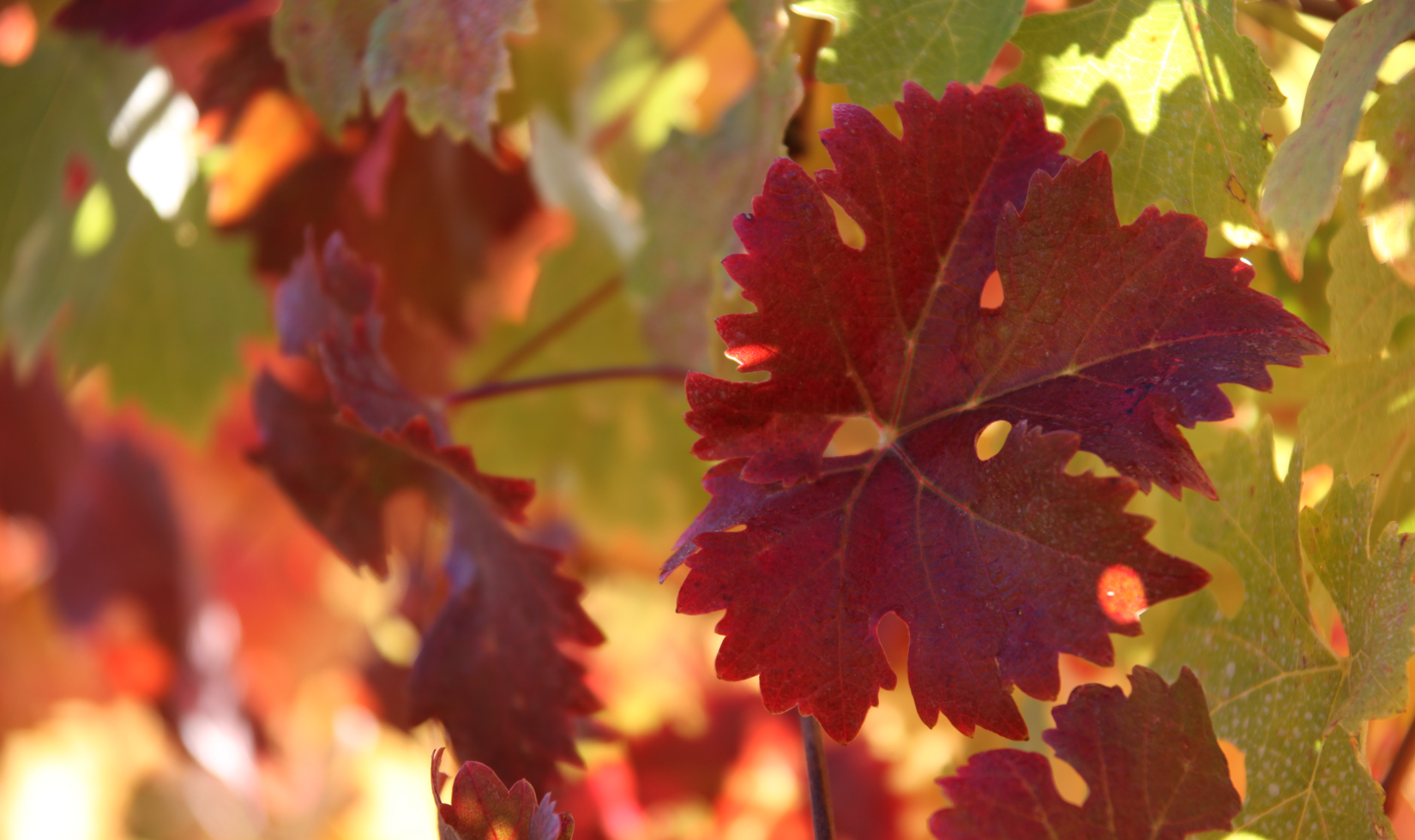
Another Insect Strikes
Years later, a disease called Red Blotch began spreading, becoming very noticeable around 2008 throughout Napa and Sonoma vineyards. It’s a virus that’s been around for quite some time, first identified in 2011, and it seemed manageable. Red Blotch is recognizable by the fiery-red leaves seen on a grapevine around harvest season. (Beautiful to visitors, tragic to growers.) Researchers weren’t able to determine the cause until 2016, when the three-cornered alfalfa hopper was identified as the likely culprit in spreading the disease. There are still debates about how severe it is, and it’s something that many growers and winemakers have always believed they can workaround. Because Red Blotch inhibits the grapevine’s ability to reach optimal sugar levels—critical to the proper conversion of sugars to alcohol during fermentation—the only remedy is to replant the entire vineyard.
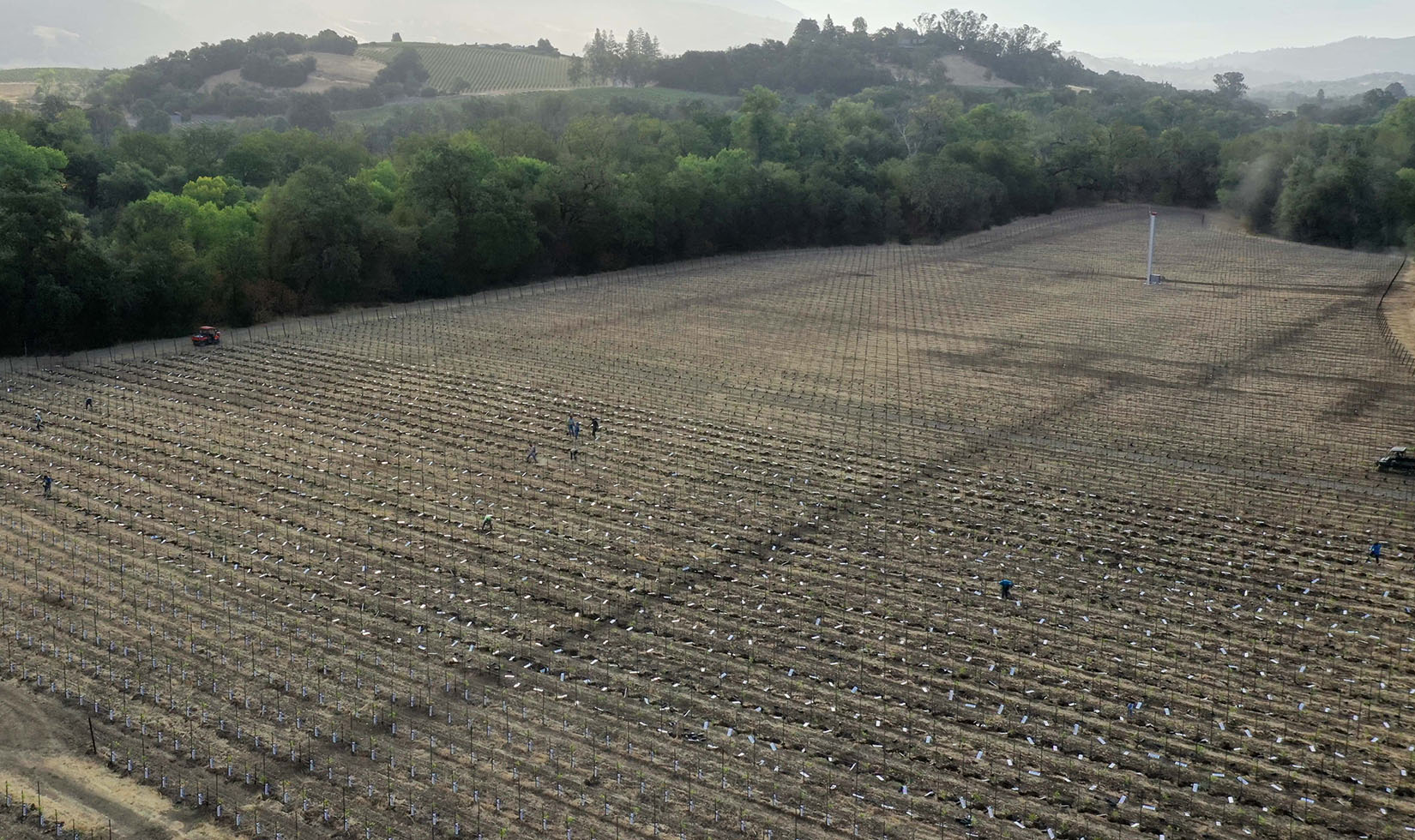
A Second Chance
There’s something very liberating about starting over from scratch. The decision is rarely an easy one, but once the blank canvas appears, it’s exciting to feel the future being rewritten.
After more than a decade of farming the Jordan Estate, I’d learned a great deal about the soils, the giant rocks below the surface and the quirks of each vineyard block—the spots where grapevines thrived and the places where plants never seemed happy. Vineyard development practices had also changed dramatically since the estate hillsides were first planted 20 years before. New advancements in preparing a vineyard site to achieve planting success were available to Jordan for the first time. I used all that we had learned, as well as soil reports and the latest technologies to create a six-year plan for replanting the entire Jordan Estate. We approached the replant with three key areas of focus: renewing and replenishing the soils, prepping the vineyard rows so that grapevine roots could spread deeply into the ground and using the best plant materials for the future. Rootstocks, clones, row direction, irrigation zones, trellising and plant density would also change.
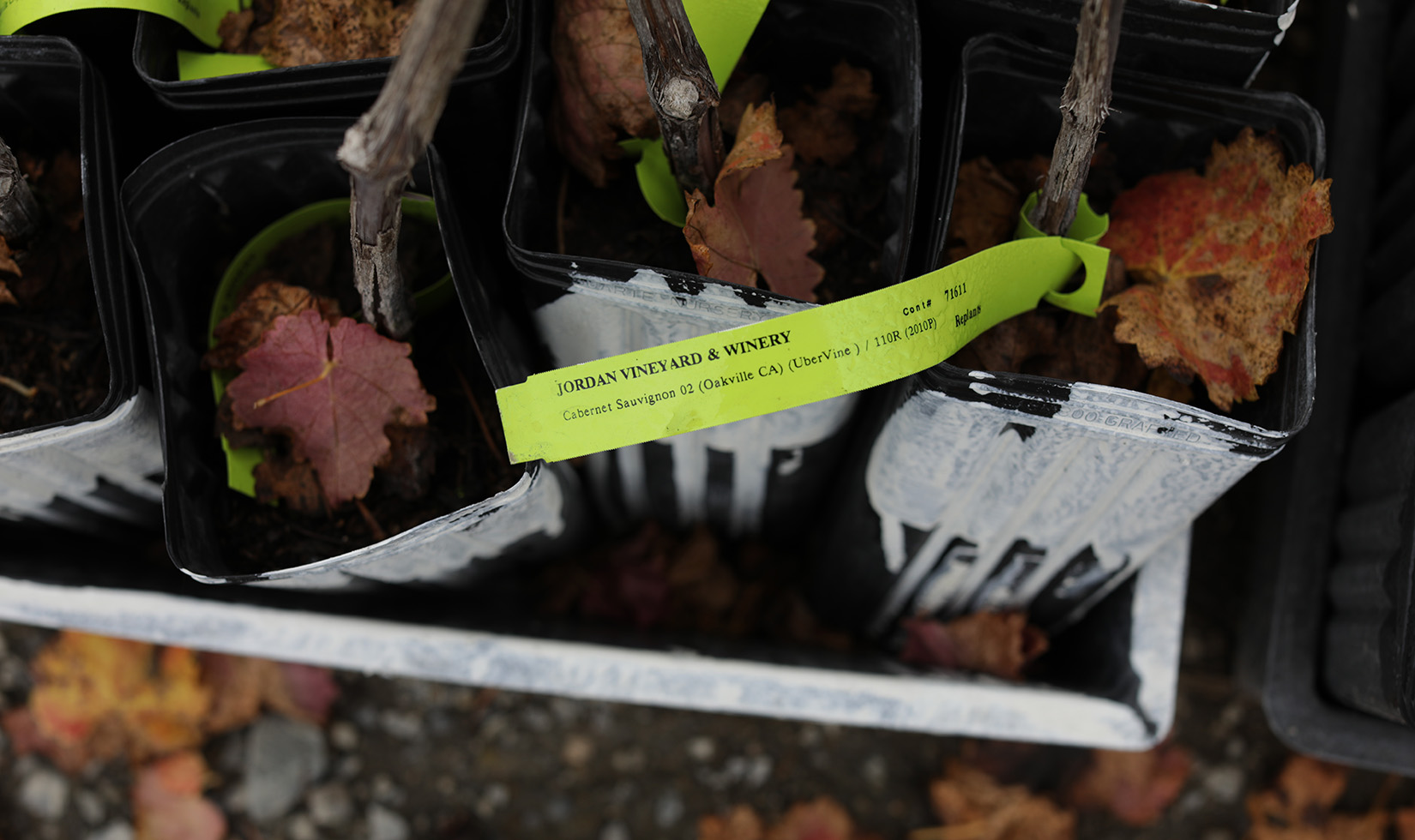
Rethinking the Mix
During the first planting of Jordan Estate, we focused primarily on growing cabernet sauvignon with some merlot and petit verdot. (There was a little cabernet franc, but its lackluster performance led to it being grafted over to petit verdot.) Over time, the demand for Alexander Valley Cabernet Sauvignon has increased so much that growers are ripping out merlot during their own replants and choosing to replace it with cabernet sauvignon. Merlot is a more fickle grape, more prone to shatter during the critical bloom season of the vines, when the flowers are transitioning to grape set. Merlot also commands less money per ton, so it’s a gamble that growers just aren’t willing to make. On the other hand, cabernet sauvignon flowers later, is less prone to shatter and also enjoys the increased demand from Napa Valley winemakers to blend the silky Alexander Valley grapes into their bottles. Cabernet sauvignon is a better bet in every aspect.
That’s an issue for Jordan because merlot is the most important blending grape for Jordan Cabernet Sauvignon. Merlot has rich fruit and soft, supple tannins that Maggie Kruse, our head winemaker, believes is central to capturing Jordan’s smooth house style every vintage.
With the replant, Jordan Estate is now divided into four geographical areas, each mostly planted to a specific grape. Two merlot vineyard blocks will be added in the coolest parts of the ranch between 2021 and spring 2022. Located on the hillside above our “merlot bowl,” petit verdot may be replanted as a secondary blending grape following a two-year fallow period.
The final piece to the replant puzzle was clonal selection. During the planting boom in the mid-1990s the selections were very limited. There are a number of different clones to choose from, and we were able to travel to a remote vineyard nursery and taste through over 20 different clones of cabernet sauvignon. What really sets the Jordan Cabernet Sauvignon style apart is the balance and integration of the grape tannins and oak. To be able to taste through the different clones and chew the skins and seeds, from which the tannins originate, was enlightening for our winemaker. Just by chewing on the skins, we could tell which clones were right for our house style. The smooth subtle tannins of Clone 2, 7, 8 and 47 were delicious, and, while other clones were beautiful, the tannins were bigger and more astringent.
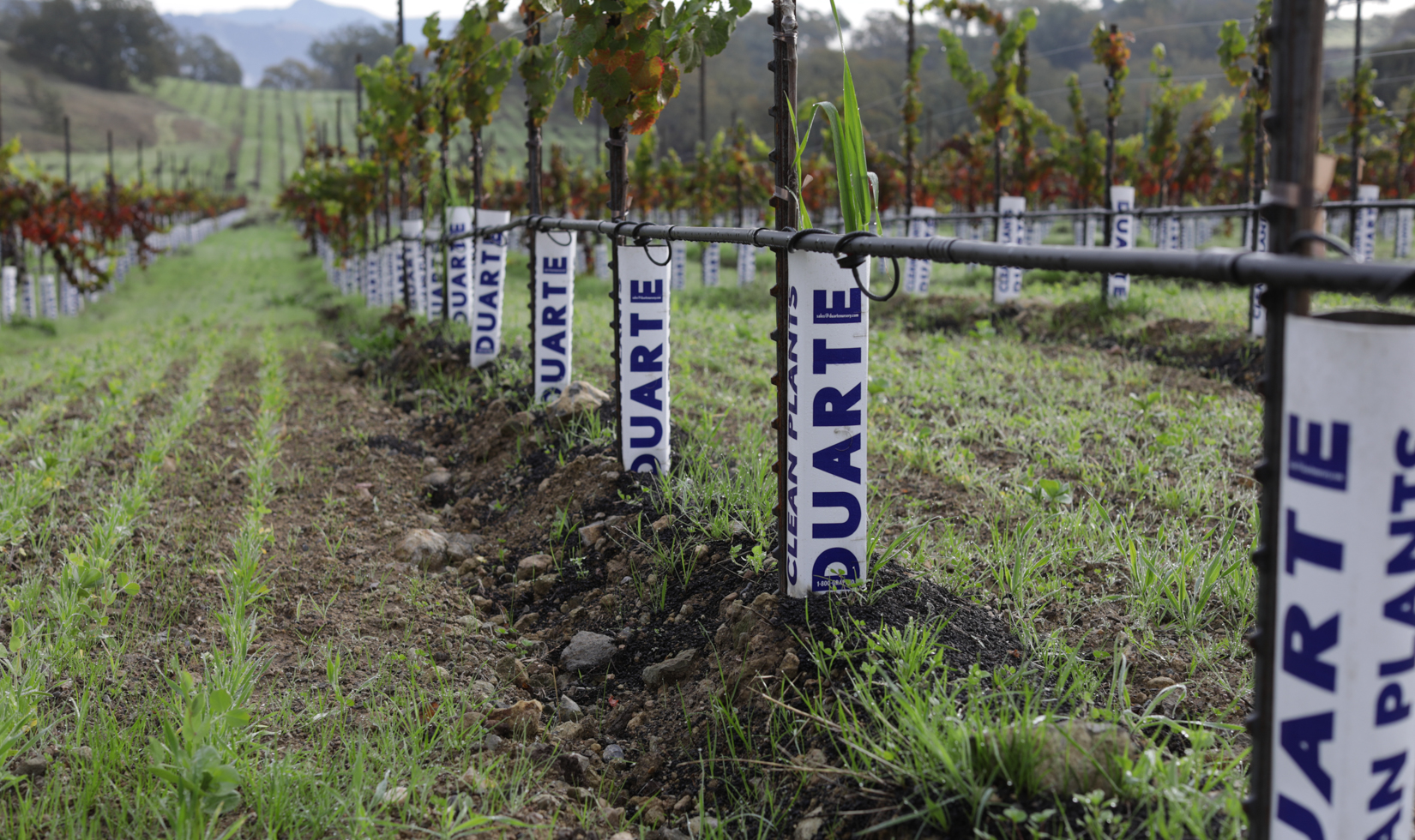
From the Ground Up
While changes to grape varietals are the most significant, other modifications were equally as important.
Rootstocks also received a major makeover. With the last Jordan Estate planting in the mid-1990s, we had over half of the plantings with the same rootstock across the ranch due to the perceived levels of magnesium in the soil—rootstock 4453. This rootstock was common in the 1990s. We may only use a very small amount of this rootstock where appropriate during the replant, less than two percent.
With the replant, rootstocks now change by soil type. There are five distinct soil types at Jordan Estate. After the replant, we’ll have at least five different rootstocks, though there are two rootstocks, SO4 and 101-14, that will be predominant. These are earlier ripening rootstocks best suited to both our soil type and the cooler climate in the southern end of Alexander Valley, closer to the Russian River.
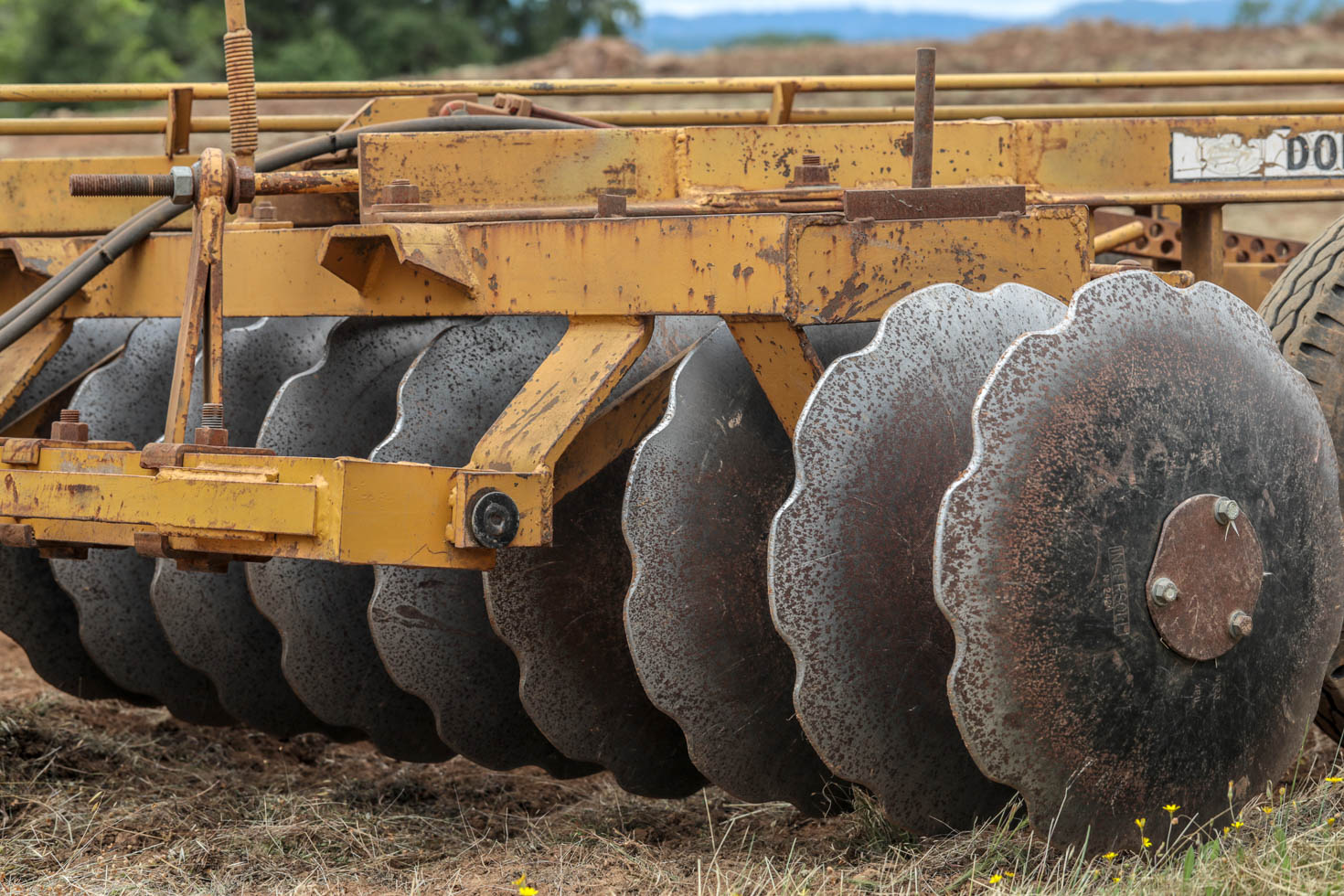
A New Cycle
Soils need time to renew after supporting grapevines for decades, so each piece of land is left fallow for 24 to 36 months. During this time, cover crops are sowed to enhance the health of the soil, such as nitrogen-rich legumes, clover and straw. (Nitrogen deficiency is common in soils in the hillsides of Alexander Valley.) A tractor prepares the vineyard row for nutrient amendments and plant placement using a process called deep ripping. The tractor plunges a metal finned shank below the surface in the exact row where the plants will be placed, loosening the soil and unearthing the rocks to make it easier for roots to spread below the surface. A calcium amendment called gypsum is applied, along with potassium and compost, where the new vines will be planted. The last step before planting is adding the complex irrigation system and trellis. The following spring or summer, depending on the winter rainfall, the new grapevines are planted. This cycle began in 2017 with two vineyard blocks being planted, and every year, gradually, two to three vineyards were earmarked to begin the replant process.
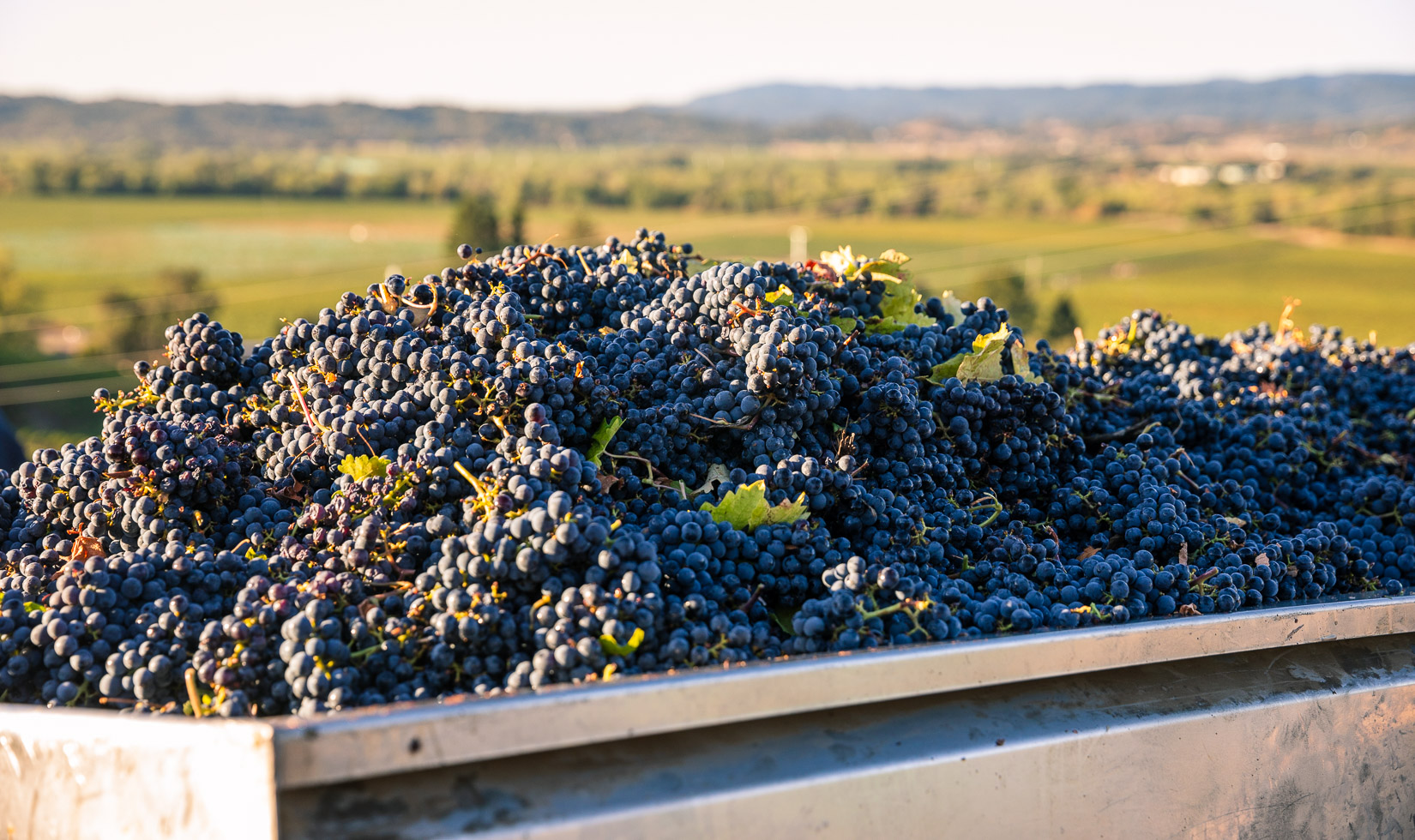
A Harvest to Remember
Every vintage, every growing season takes countless time and patience—patience where Mother Nature is ultimately the beholder of each harvest’s fate. I remember holding my breath before Maggie tasted the Chateau Block juice for the first time—I felt a combination of relief and joy when I heard the excitement in Maggie’s voice. Our estate fruit was making its way back into the Jordan blend—a momentous and incredible achievement for the entire team and a big step in our replanting journey. It was a year to remember.
